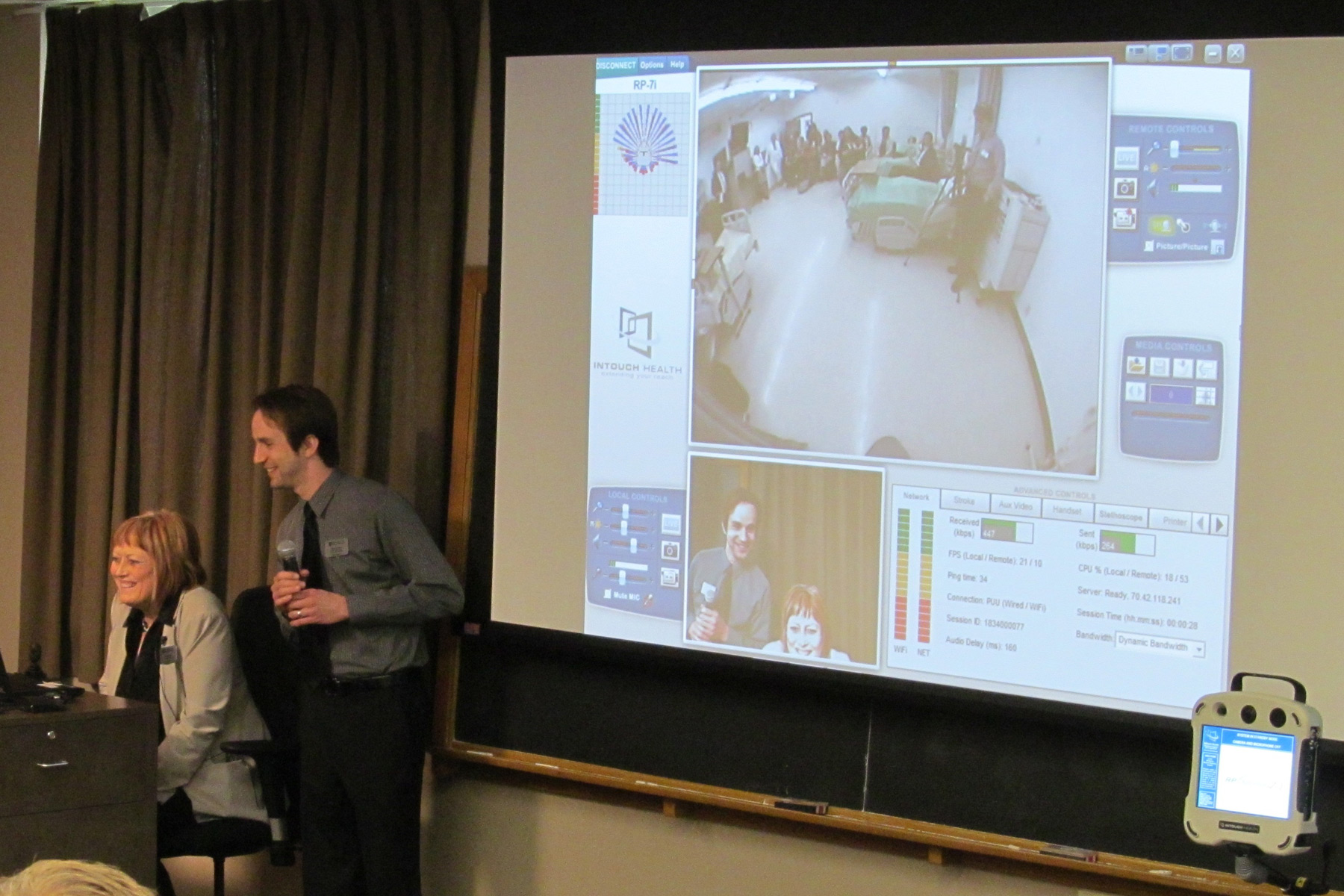College of Nursing launches remote presence robot technology
The University of Saskatchewan College of Nursing has launched an innovative platform that will allow nursing students to “learn where they live” in northern Saskatchewan.
By Mark Ferguson By using remote presence technology, nursing students living in northern communities will have access to faculty and mentors. According to the college, this is one of several technologies used in the new Bachelor of Science in Nursing curriculum offered this fall.
By using remote presence technology, nursing students living in northern communities will have access to faculty and mentors. According to the college, this is one of several technologies used in the new Bachelor of Science in Nursing curriculum offered this fall."The goal of launching remote presence technology is to address the critical shortage of healthcare workers in rural and remote communities," said College of Nursing Professor and Dean Lorna Butler. "The pursuit of post-secondary education should not be disadvantaged by geography.
"This technology will help us overcome many of the barriers to accessing continuing education and health services by offering students the opportunity to obtain a first-class education without leaving their communities."
According to Mark Tomtene, director of information and communications technology in the College of Nursing, "the mobile remote presence endpoints are connected over broadband internet through local Wi-Fi service. Cellular network connectivity is also an option on some units. The endpoints are accessed and operated remotely through encrypted data from a licensed control station composed of a laptop computer, webcam and USB joystick."
Tomtene says the university is using is an independently mobile robot with an articulated flat-screen monitor for visual display – called the RP7i model - which uses a dual camera configuration and full on-board audio for a seamless and immersive experience.
"The technology allows faculty experts to engage with learners at remote sites to teach and assess clinical competencies. Having a remote presence in nursing education removes geographical barriers and supports students to learn where they live," he added.
The technology was designed and developed by InTouch Health, a company based in Santa Barbara, California, for use in clinical practice. The U of S is extending the application of the technology to post-secondary education in the health sciences.
The robotic endpoints have been deployed to the Northlands College Nursing Skills Lab in Air Ronge and the Keewatin Yatthé Regional Health Authority at St. Joseph's Hospital and Health Centre in Île-à-la-Crosse. According to Butler, both communities need more health-care professionals, specifically registered nurses.
The remote technology robots will allow faculty members located at the three College of Nursing sites in Regina, Saskatoon and Prince Albert to "beam in" to the northern sites on demand. These northern communities are excited to be the first in Canada to use this innovative technology for nursing education.
For more information, visit the College of Nursing website: http://www.usask.ca/nursing/
Visit the InTouch Health website to see the technology in action: http://www.intouchhealth.com/videos-action.html

